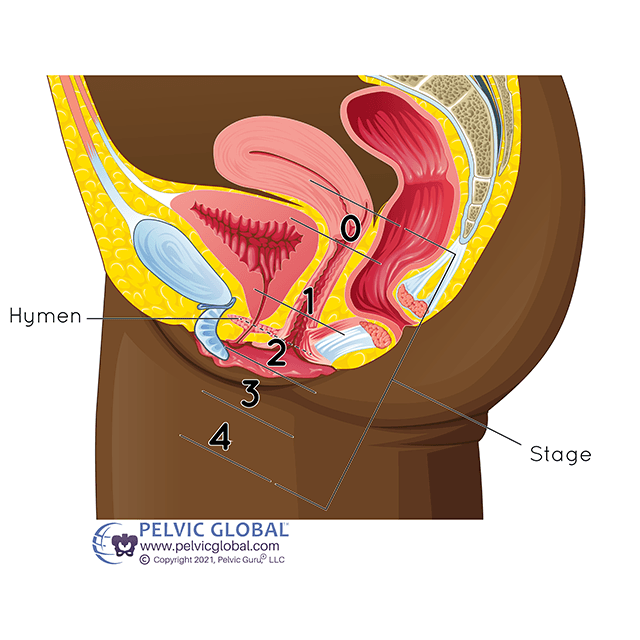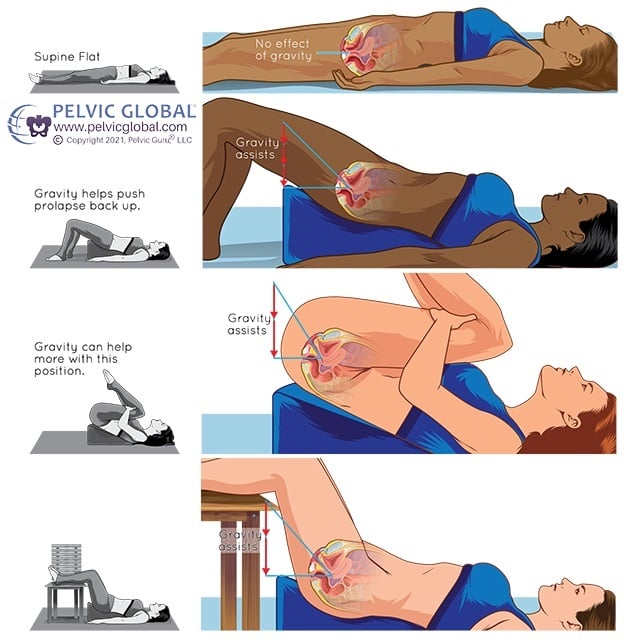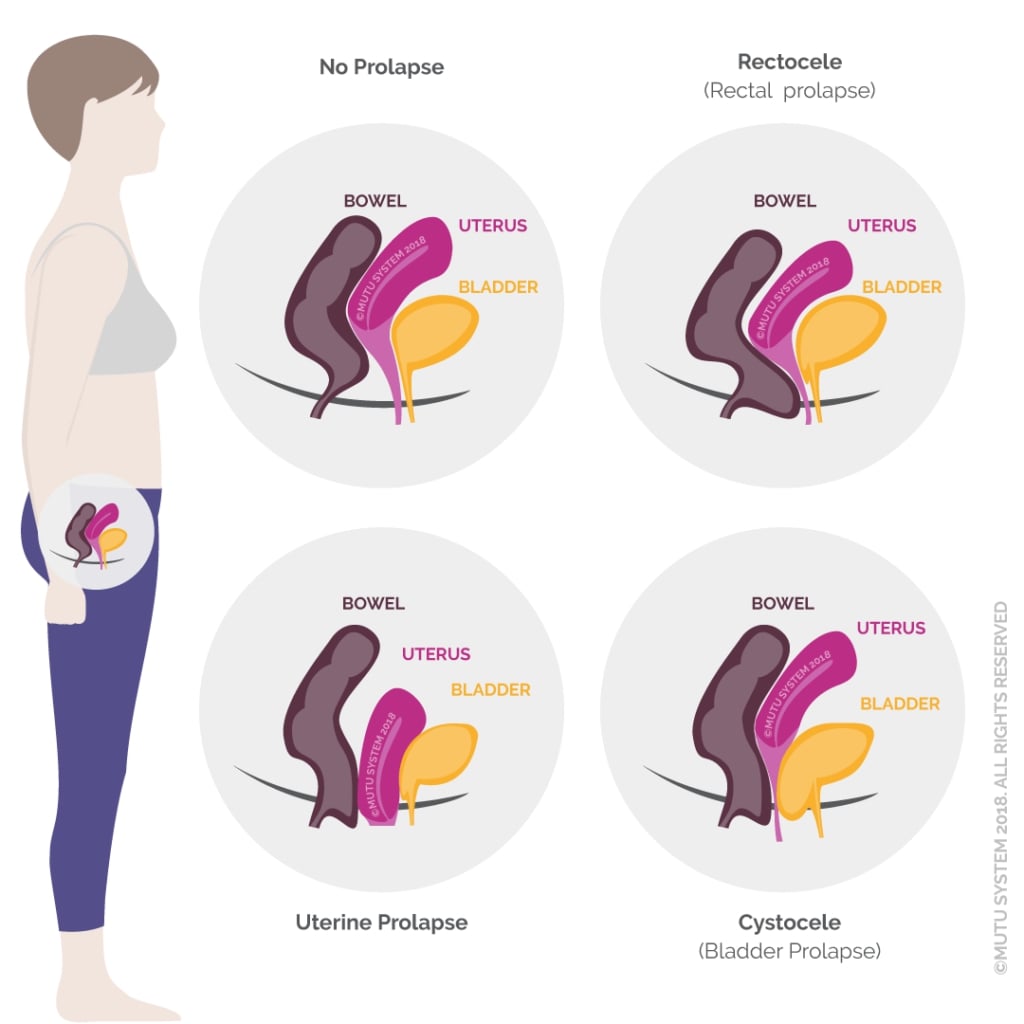We need to talk more about prolapse. And poo-ing. And straining, and constipation and ‘not feeling empty’… and bulgy bits and organs feeling like they’re falling out. 50% of women of child-bearing age will experience some level of prolapse. (Yes, that’s half of us, so we should be talking about it a lot more). What are the best non surgical solutions for prolapse? And when *do* you need medical intervention?

Non Surgical Solutions for Prolapse
IMPORTANT TO KNOW: Prolapse and pelvic floor problems do not just ‘get worse’. A mild or mostly asymptomatic prolapse *does not mean* an inevitably worsening prolapse.
You can manage symptoms and avoid surgery or further issues, by simply changing some of your movement (and bowel movement) habits.
More on types, grades and symptoms of pelvic organ prolapse here.
Pelvic floor exercises for prolapse
Kegels or pelvic floor exercises are essential to relief of prolapse symptoms without surgery. But there is more to a kegel than ‘squeeze like you’re trying not to wee’.

An effective pelvic floor exercise requires as much focus on the release / relax phase of the muscle action, as it does on the contraction.
Find pelvic floor exercise step by step instruction here. Raising your hips with a wedge as your exercise will help you connect and feel your pelvic floor exercises working.
MUTU is proven in NHS hospital trials to improve prolapse symptoms and pelvic floor strength. 88% of women suffering from symptoms of pelvic organ prolapse reported significant improvement after using MUTU System.
Clinical survey data from Trial in partnership with Norwich University NHS Hospital with 100 postnatal patients
Change how you go to the toilet
This is my key #WendyLoves recommendation for prolapse relief without surgery. For good pelvic floor health, put your feet up when you go to the toilet. The Squatty Potty is what I like to put my feet on when I go. Raising your feet and your knees when you poo, aligns your pelvis and pelvic organs to eliminate more comfortably and more completely. Go here to watch a video of a cute Unicorn pooping rainbow sparkly ice-cream, which weirdly, explains it all perfectly.
Great for everyone’s pelvic floor at every stage of their journey, and especially if you’re dealing with prolapse symptoms, haemorrhoids, constipation, if you strain, or struggle to feel ‘empty’. Seriously – this little stool by your loo might just change your life 😆
Keep your gut healthy
Constipation, bloating and digestive issues do not make for smooth and easy bowel movements. Poor gut health can also cause fatigue, trouble sleeping and brain fog. Look after your gut health with our #WendyLoves recommended program from NoshDetox.
Non Surgical alignment solutions for prolapse relief
‘Alignment’ means posture, or biomechanics. It’s how your body stacks together when you walk, stand or sit. And alignment affects your pelvic floor function. More on alignment and your pelvic floor here but in a nutshell, don’t tuck your tailbone underneath you, and don’t wear high heels too much. The best exercises for prolapse relief without surgery will build strong glutes (muscles in your bum), core strength and good alignment.

Non-surgical solutions for prolapse – Pessaries
Alongside the above exercise, movement and toileting options, you can get fitted for a pessary.
A vaginal pessary is a device made of rubber (latex) or silicone, inserted into the vagina and left in place to support the vaginal walls and pelvic organs. A pessary does not fix or cure the prolapse, but provides extra support and can help relieve symptoms
Pessaries can be effective to ease the symptoms of moderate or severe prolapse, and can be a good option if you cannot have, or would prefer not to have, surgery.

Vaginal pessaries come in different shapes and sizes depending on your need. The most common is called a ring pessary. You may need to try a few different types and sizes to find the one that works best for you. Two common types are support pessaries—such as rings—and space occupying pessaries—such as Gellhorn or shelf pessaries. More on types of pessary and options from WebMD here.
An NHS or private gynaecologist, specialist nurse at Pessary Clinic or (some) pelvic floor specialist Physiotherapists can usually fit a pessary. Not all pelvic health Physios do this, so check with yours, you may need a GP referral to a Pessary Clinic. or Uro/Gynae Consultant.
A pessary needs to be removed, cleaned and replaced regularly. You will learn to do this yourself but should always ensure you get the right fit and technique with a specialist medical professional first.

When DO you need surgery for prolapse?
The answer to this is when 1. Symptoms bother you enough that you want it fixed and 2. Pelvic floor rehab, toileting / alignment strategies and non-surgical options like a pessary… have not improved matters. Mesh surgery for prolapse can be effective but is not without problems or controversy. Get informed about vaginal mesh surgery here.
Remember too that just like in the case of abdominal surgery for diastasis recti, it’s not a case of EITHER surgical OR non surgical solutions. All of the above strategies will help relieve symptoms and prevent worsening of a prolapse, whether or not you decide to opt for surgery. So don’t give up on non-surgical solutions for prolapse relief, even if you and your medical caregiver decide to go with an op. They will all still help! (and get yourself a Squatty Potty – you won’t look back 😉








